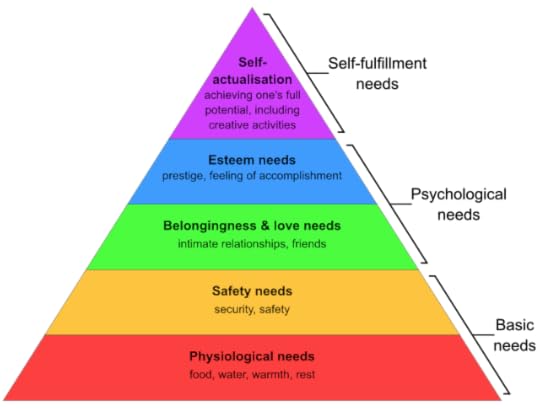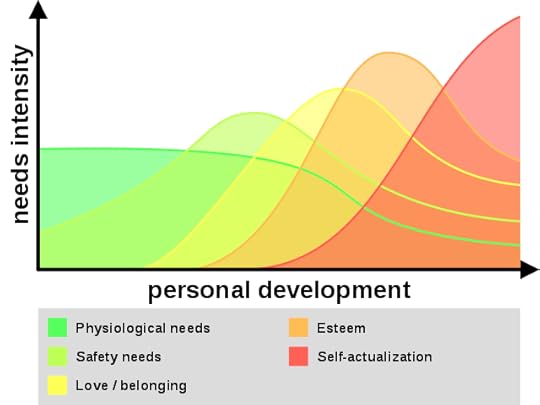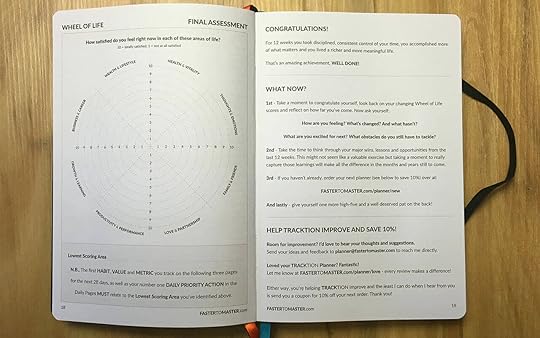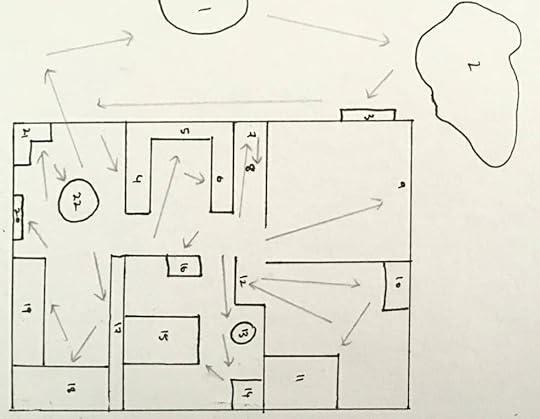Anthony Metivier's Blog, page 7
March 28, 2023
The 4 Stages of Learning & How To Speed The Important Ones Up
 William Shakespeare famously compared the stages of learning to acts performed in the theatre of life.
William Shakespeare famously compared the stages of learning to acts performed in the theatre of life.
For example, in As You Like It, the second stage involves going to school, whether the child likes it or not.
But what are the four levels of learning we use today?
I’m talking about stages like:
Concrete experienceReflective thinkingAbstract thinkingPersonal experimentationThat’s one model given by Kolb in Experiential Learning: Experience as the Source of Learning and Development.
Is this really the best way to describe the stages of the learning process?
Or should we look to other models that describe the various levels of learning we go through? Ones that include the notion of “unconscious competence”?
On this page, we’re taking a deep dive into the topic.
Ready?
Let’s go!
https://www.youtube.com/watch?v=I7Epy...
What Are The Four Stages Of Learning?As mentioned above, Kolb presents a version of the four levels that involve processing at concrete, abstract and reflective levels of thinking.
Usually, however, people are looking for the four levels of competence. These originally come from Martin M. Broadwell who intended them for teachers in need of a model for their students.
As a learner, you can also use these levels of learning to help navigate your way through complex topics. Following this model can also help ensure you meet your cognitive needs in a structured manner as you go about your learning.
Let’s have a look at each level in detail.
Unconscious IncompetenceHave you ever started learning something you’re basically familiar with only to realize how little you know about the topic?
I’ve had this with music. Although I’ve played in bands for decades and toured the world, when I hang out with much better musicians, I realize how little I know. My skills lead to all kinds of incorrect intuitions as I play simply because I don’t know the key signatures as well as some of the trained jazz musicians I know.

Memory expert Anthony Metivier performing at a concert in Germany.
Still, I sometimes find myself trying to play in ways I don’t understand, only to hit notes that don’t sound great. It doesn’t happen to me anymore, but when it did, it was like I was suffering the musical version of the Dunning-Kruger Effect.
This point is important to understand. You don’t have to be completely unfamiliar with a topic to experience unconscious incompetence.
Captain Edward J. Smith provides one of the most famous examples. As the captain of the Titanic, he certainly knew a thing or two about sailing boats.
But that didn’t stop Captain Smith from following the wrong intuitions. Although he received multiple warnings about the dangers ahead, he still failed to take action and the Titanic wound up sinking.
Conscious IncompetenceI’ve become much more modest over the years in music, and am now much more conscious of my incompetence with certain genres of music.
To become more competent, I study the specific areas where I’m weak and patch in deliberate practice to turn incompetence into skill.
 A more famous example of conscious incompetence is someone like Elon Musk using first principles to figure out what he doesn’t know. Then, by adding knowledge and competence, he was able to purchase various companies and improve them.
A more famous example of conscious incompetence is someone like Elon Musk using first principles to figure out what he doesn’t know. Then, by adding knowledge and competence, he was able to purchase various companies and improve them.
Of course, the court is still out on whether or not his conscious incompetence about Twitter will improve.
Conscious CompetenceAt this level of knowledge, you’re in the sweet spot.
You can think about people like Stevie Wonder. Many people think he’s a musical genius – including me.
Although blind from birth, he learned not only how to play piano and sing, he also learned how to compose and perform.
You might think of these as one task, but they’re actually different things.
For example, I’m consciously competent when it comes to playing concerts with bands in my preferred genre. I can also compose relatively well and even sing to a certain degree.
But I’ve never developed conscious competence as a studio musician.
This is not uncommon. Many of your favorite bands aren’t actually playing on the albums you buy. Their record companies have hired consciously competent musicians, leaving them to do what they do best: perform.
Then there are musicians who don’t even write their own songs, which is not necessarily a bad thing. Many creative industries rely on detailed knowledge of conscious competence. That way, each person can focus on just their part and shine.
Unconscious CompetenceAt this level of competence, the individual barely has to think about what they’re doing.
Shakespeare, for example, was thought to be able to run circles around other playwrights when it came to writing incredibly powerful plots and individual lines of dialogue.
Or you can think about virtuoso musicians. They don’t even need to see a score or rehearse. They just hop on stage with musicians they’ve never met and produce pure musical magic.
Theoretically, they have highly trained procedural memory skills.
Why You Might Have Trouble Learning New Information QuicklyThe answer is simple:
Many people put the cart ahead of the horse.
I once heard musician Joe Satriani answer a guitar student’s objection that they did not know what to learn next to overcome a plateau. They were trying to do advance soloing but kept getting stuck.
Satriani asked if they knew the name of every note on the fretboard. The person did not.
“Then you do know what you need to learn next,” Satriani insisted.
He wasn’t particularly patient in his response and it was partly because the student clearly had Dunning-Kruger Effect. (This happens when people are unaware of how little they know about something, but nonetheless suffer memory biases that make them think they do.)
So what’s the solution:
Always analyze what you want to learn, chunk it down, and start with beginner’s mind.
Being humble, developing foundational knowledge and not being afraid to repeat certain levels of knowledge is almost always the key.
How to Remember the Stages of KnowledgeAs we’ve seen, there’s more than one “four levels of learning” model out there.
So if you want to be able to whip out the stages of learning process from any source you’ve found interesting or useful, here’s what I suggest:
Develop unconscious competence with memory techniques.
They will help you rapidly absorb lists like these and add on examples like the ones we’ve discussed today with everyone from captains to musicians.
How to get started?
I share the best ways I’m aware of in my free memory improvement course:
These ancient memory techniques are still in use today for one simple reason:
Our ancestors found them helpful when it comes to moving through a lot more than the four levels of learning.
We’ve been using them to help us learn languages and every topic you can imagine.
All you have to do is avoid the perils of unconscious incompetence and they will you avoid learning struggles.
So what do you say?
Are you ready to learn with greater competence?
Make it happen!
March 22, 2023
Master Maslow’s Hierarchy By Fulfilling All Of His Cognitive Needs
 Did you know that nearly every discussion of Maslow’s hierarchy of needs is missing an essential piece of the pyramid?
Did you know that nearly every discussion of Maslow’s hierarchy of needs is missing an essential piece of the pyramid?
It’s true, and today we’re going to restore that piece.
On top of that, we’re going to dive deep into how you can fulfill each tier in your life.
Even better, I’m going to help you remember each of the needs.
That way, as you work on improving your life and the lives of others, you’ll be able to rapidly access a mental database packed with examples of psychological needs.
And you’ll be able to fulfill your full potential.
Perhaps you’ll even be able to go beyond that because there’s one need in particular that Maslow wasn’t able to publish before he died.
I’ll share what it is, show you how to experience it and give you tips on maintaining this missing piece of the pyramids of needs once you’ve got it in place.
Ready?
Let’s dive in!
What Are Cognitive Needs? The Forgotten Tier In Maslow’s Hierarchy of NeedsAs the term “cognitive needs” suggests, we have cognitive awareness of things we want and need from life.
We’re not the only species that has such awareness, but our cognitive abilities are so developed that we seem to be especially sensitive to things we don’t have.
Abraham Maslow got very interested in humanity’s special sensitivity to a set of human requirements that led to him developing the hierarchy of needs.
Often, you see Maslow’s needs placed within a pyramid.
The wider needs are basic and as you move up the pyramid, you get psychological and fulfilment needs. All together, the needs in the basic pyramid of needs are:
Physiological needs (food, water, warmth, rest)Safety needs (security, safety, predictability)Belongingness and love (intimate relationships and friends)Esteem needs (prestige, sense of accomplishment)Self-actualization (creativity, fulfilling your potential)Maslow first presented these needs in a paper titled, “A Theory of Human Motivation.”
Solving the “First Glance” Problem With The Pyramid of NeedsOne mistake that people sometimes make is thinking that you can move up the pyramid and leave earlier needs behind.
But this isn’t the case. You always need to balance the needs, which is why an alternative, dynamic visualization can help understand Maslow’s hierarchy as something that plays out over time:
Others have interpreted the hierarchy of needs in terms of a circle.
For example, my friend Arthur Worsley used the “Wheel of Life” format in his “Faster to Master” Tracktion Planner:
In this case, the “needs” are modernized to include cognitive needs examples like:
Health and vitalityThoughts and emotionsFamily and friendsLove and partnershipsProductivity and performanceGrowth and learningBusiness and careerAs you can probably see, “productivity and performance” are basically the same as Maslow’s original esteem needs.
In truth, there’s no perfect way to visualize the hierarchy. The best thing is to find a model that works for you so you can bring balance to all of the needs in your life.
The Missing Cognitive NeedAs great as Maslow’s original hierarchy can be, he ultimately wasn’t happy with it.
Towards the end of his career, he wrote The Farther Reaches of Human Nature.
In this book, he described a very special cognitive need he called self-transcendence.
Basically, it’s like the “karma yoga” concept we talked about in my post on mental strength. The idea is that you ultimately put your own needs aside as much as possible, if not entirely.
Many people who have sought to master their memory share this concept. For example, Giordano Bruno described a kind of nondual experience where you would experience a kind of oneness with the entire universe.
Sound weird and raise your skeptical hackles that a psychologist like Maslow would suggest such things?
Well, here’s Maslow in his own words from The Farther Reaches of Human Nature:
Transcendence refers to the very highest and most inclusive or holistic levels of human consciousness, behaving and relating, as ends rather than means, to oneself, to significant others, to human beings in general, to other species, to nature, and to the cosmos.
I myself have suggested something similar in my book The Victorious Mind. Fulfilling the cognitive need to give to others without expectation of return is hard, make no mistake. But this “karma yoga” is indeed far more fulfilling than I ever imagined possible.
In fact, fitting it into your life is highly recommended.
Why It’s Important to Fulfill Your Cognitive NeedsWe’re all on this planet together.
That’s the ultimate reason why you really should spend time every week working on your personal hierarchy or “wheel of life.”
The more people who self-transcend, the better it will be for everyone. Eckhart Tolle makes an excellent argument for increasing the number of transcended people in his book, A New Earth.
A similar point is made by John Danaher who focuses on the positive outcomes technologically is likely to bring when it comes to freeing humanity from work.
Let’s take another example. The reason you want to make sure you’ve fulfilled every example of physiological needs specifically comes down to your ability to learn faster, focus and remember things.
But you can’t do that if you’re clogging your mind with foods that destroy your memory and create brain fog.
The same goes for your career, study needs, family and personal rituals around sleep, meditation and the quality of your memory.
The good thing is that if you start working with your memory first, you’ll be able to better remember to focus on all the other parts of the hierarchy.
With that in mind, let’s talk about a powerful memory technique that will help you do just that.
How to Use a Memory Palace to Satisfy Your Cognitive NeedsAlong my personal journey, I found it useful to go beyond merely reading about Maslow’s hierarchy.
I also memorized it while completing journaling exercises that use the Wheel of Life.
The best technique for getting all of the cognitive needs into memory? The Memory Palace technique.
Let’s say you memorize Maslow’s original hierarchy.
All you have to do to memorize it is mentally layer it on a wall in a room of your house, your school or where you work. Like this:
By placing the pyramid in a familiar space, you give your mind an anchor point it can refer back to when you want to recall each tier.
If you need more “stickiness” you can add a memory technique like the number rhyme or other forms of mnemonic imagery.
With practice, you can memorize information like this often within minutes.
Once in memory, it will be much easier for you to remember to focus on each tier as you go about your life.
Memorize The Pyramid Of Needs And SucceedI’m so glad I took time to really understand Marlow’s formula. And not just the original form, but the enhanced format he wasn’t able to fully promote before he died.
Luckily, people have expanded the concept since his time with alternative versions like the Wheel of Life.
But as I hope to have made clear, it’s important for you to experiment with multiple versions. Even if you find one that feels “right,” I suggest you continue to study and experiment.
Many cultures have interesting variations and the more you can consider them both through study and application, the more you’ll benefit.
And who knows?
Perhaps one day you’ll transcend and become so selfless that you’ll enjoy a life of giving.
That’s certainly my goal, and to paraphrase the playwright Howard Baker put it, “because it is hard, I feel honored.”
Not everyone agrees that humans need to take on challenging projects to feel fulfilled, but it’s certainly worked for me.
One of those projects is to give this free course away to as many people as possible:
Is it really free?
Yes, but it does “cost” your time, attention, focus and energy.
However, complete the exercises and you will emerge with a memory system that allows you to learn faster and remember more.
And you’ll have practice fulfilling one of the biggest cognitive needs of them all:
The esteem need to feel a sense of accomplishment.
I enjoy that sense every time I memorize something new and know that you will too once you have some Memory Palaces set up and in use.
So what do you say?
Are you ready to get out there and make the cognitive needs your own by committing them to heart and practicing fulfilling each and every one (including the lost tier)?
I wish you a great journey and hope to meet you some time and place along the way!
March 13, 2023
How to Learn Faster and Remember More: 4 Easy Techniques to Learn New Skills
 Have you ever sat down to learn faster with some new accelerated learning technique and thrown your hands up in the air?
Have you ever sat down to learn faster with some new accelerated learning technique and thrown your hands up in the air?
No, not to catch a balloon or give a salute.
But because you were furious and frustrated?
And have you felt that a learning process was so hard that you just wanted to give up?
I hear you!
After all, I’ve put some of the toughest learning challenges in front of myself all the time.
Languages like Biblical Hebrew, German, Chinese, over 100 verses of Sanskrit.
Then there are the musical instruments I’ve learned like trombone, sitar and bass.
Plus I’ve used my ability to learn new skills at laser-fast speeds to help me run the memory website you’re reading now:
Hands-on mechanical tasks like figuring out how to spread the good news about memory techniques with videos, blogs and podcasts.
And in all cases, it takes grit and mental strength.
It takes tenacity.
Above all, success with learning quickly takes these…
Yours Free: A Private Course With Cheat Sheets For Becoming A Memory Master, Starting From Scratch.>>> Click Here For This Special Free Offer.
4 Secret Ways To Make It So Easy
You Can Run Circles Around Everyone Else!
If you’re interested, I’d like to share these 4 secrets with you, plus another 4 in this video:
All I ask is that you read everything carefully and give at least ONE of these insights from my experience a serious try.
But let’s be clear:
Trying just one would be good. But …
50% would be great.
100%? …
Why that would be downright Magnetic!
1. The Most Powerful Question Any Learner Can Ask
One of the reasons some people find learning new skills so painful is that they don’t ask simple questions.
It’s a question that, when applied often, can unlock the nuclear power needed to drive you through some of the hardest missions in life.
It’s a question almost no learner asks.
Probably because it’s a bit tough for most people to wrap their heads around.
It sounds kind of selfish, after all.
The question is:
“What’s in it for me?”
But even if it has a selfish angle to it, this question is so important.
Why?
Because So Many Learners Are Trying To
Accomplish Outcomes For Everyone But Themselves!
Think about it:
You go to school and learn things to please the machine …
You get a medical degree to appease your family …
You study a language because it’s part of a degree …
Nothing wrong with any of that, unless …
None Of It Has To Do With What
You Authentically Want In Life!
And so it’s little wonder learning feels hard. If you’re the last person who gets a kick-back for all that effort, it’s always going to feel like you’re trying to chew through a brick wall.
Make it easier on yourself by learning something that has a definite payoff for the number one person that matters: You.
Because here’s the plain truth:
You’re a good person.
You want to serve others.
And you can change the world.
But it will never happen if you secretly hate the learning process because it just doesn’t serve your needs first.
Want a fast and easy way live authentically? Practice gratitude:
2. Why Comatose Zombies Can
Outlearn The Flash Any Day
Okay, that sub-headline might be a bit misleading.
What I mean to say is that you need to relax to learn.
Because here’s a fundamental truth:
Information flees from tension. But it’s Magnetically attracted to relaxation.
Let me say that again:
Information flees from tension. But it’s Magnetically attracted to relaxation.Click To TweetAnd the more you know how to relax your brain, the more information will want to stick around. You’ll be able to slosh it around the mouth of your mind like fine wine and actually enjoy it for a change.
And what you enjoy… ?
Pleasure Is Instantly Easier To Remember!
The trick you need to understand when it comes to relaxing your mind is this:
Your mind is produced by your brain.
Your brain is a physical entity.
And that’s what makes the Memory Palace technique so powerful:
It’s something physical out in the world being used physically inside your material brain.
Don’t know how to make a Memory Palace? No problem…
And to get the most of the training, relax your mind each time before you use your memory.
That said, never try to relax your mind without relaxing your body first.
In fact, it’s very likely that the only way to truly relax your mind is by relaxing the body first.
So the next time you sit down for a study session, stretch a little first.
One way I like to do that is by mind mapping. My friend Joseph Rodrigues is a great source for learning how to use the technique to get into a state of flow.
Meditate.
Focus on your breathing. Just 5 minutes a day, 4 times a week is scientifically proven to create better memory.
Attention paid to breathing will lower most of your resistances to learning and make everything easier.
You can also use your meditation time to walk through the Memory Palace Networks you create. As memory expert Boris Konrad has explained, active recall is essential for memory formation. What better way to practice it than when you’re already using meditation to stack the chips in your favor?
3. Understand That The Map Is Never The Territory –
But Maps Sure Do Help!
When I created this Infographic and Podcast episode giving you a deeper understanding of how to realistically memorize a textbook, I had no idea people would find it so practical and useful.

After all, everybody asks me for “tips and tricks” that will let them memorize entire books.
But the truth is that this feat is rarely necessary. In fact, it’s probably never necessary.
But if you use the techniques I teach in that podcast to get a global overview of the book you need to read, you’ll have a map. This map will set the stage for your experience of the territory.
And that will give you laser-targeted tools for remembering the parts that matter. Proof:
https://www.youtube.com/watch?v=eIQRi...
When you can do that, you do better than just learn and remember. You also create new knowledge.
And when you create knowledge, the speed at which you can learn grows exponentially. It feels good, creates energy and encouragement and keeps you on the path of continual growth.
Nothing difficult or painful about that.
4. The Magnetic Magnifying Glass Method
Have you ever heard the phrase, “you don’t know what you don’t know”? Tony Buzan mentioned it during our conversation some time ago on the Magnetic Memory Method Podcast.
If you want to make learning faster and easier, make sure to get yourself in orbit with that concept.
Why?
Because when you hold a magnifying glass to your own ignorance, you get real clear on what it is you need to learn. Without that clarity, it’s nearly impossible to make progress as a self-directed learner.
In other words, learning truly is hard and slow when you’re stumbling around blind in a cloud of unknowing.
But when you ask questions about what you know and don’t know about a topic, suddenly a lot of that fog is whisked away.
Want a simple exercise you can use for each and every learning project you ever undertake? I promise:
It’s easy, fun and speeds up everything.
It’s called:
Writing summaries.
Every time you take a class, attend a study session, read a chapter, watch a video or even use an app, take a quick second to jot down everything you can remember.
Then beneath that, start asking questions about what it is you think was covered … but mysteriously can’t remember. This will help train your selective attention abilities.
Then make two plans:
One plan for how you’re going to continue to remember what you remembered.
Another plan for what you’re going to do to fill in the gaps so that you can remember the information you think flew over your head.
Simple. Elegant. Easy and effective.
Why Most People Prefer A Life Based On Excuses
A lot of people will go through a post like this, nod yes to each and every point and then carry on with their lives of learning desperation.
The reason why this happens, beyond just a bad way of drawing from their episodic memory, is simple:
It’s all contained in point number one.
If you missed it and care about the life of your memory and your mind, go over it again.
And if you feel like you’re resistant to any of the wisdom contained in this post, review the second point I’ve made.
If anything on the planet raises your hackles, a few simple brain exercises that take just a few minutes of your time could be a game changer for you.
And if you’d like a realistic way to remember everything of importance in any book or posts like these you encounter in the world, here are 7 more powerful tips that show you how to improve memory for studying.
For the true Magnetic Knight, point four will be the most precious of all. There’s a little comment section below where you can complete this part of the exercise. I’ll be around to help you fill in any gaps I may have missed.
I look forward to hearing from you, and until next time, keep learning and keep yourself Magnetic! 🙂
Yours Free: A Private Course With Cheat Sheets For Becoming A Memory Master, Starting From Scratch.>>> Click Here For This Special Free Offer.
Aphantasia: Develop Your Memory Even If You Cannot See Mental Imagery
 Aphantasia.
Aphantasia.
Sounds like a magic word a magician would say before conjuring a rabbit from his hat, doesn’t it?
But let me ask you this:
Can you visualize the magician pulling out the rabbit by his ears?
For most of us, it will be easy to recall images inside our head, using our mind’s eye.
However, if you could NOT see any image in your mind’s eye – no colors, no sounds, no smells, no textures, no flavors, nothing at all – you may have a condition called aphantasia or a blind mental eye.
Don’t freak out, though. Many people have aphantasia, even magicians.
Familiar with Penn Jillette (of Penn and Teller fame)?

He is a famous magician and entertainer, and, he is an aphantasic(!). This was according to his own words on his Sunday School podcast, Episode 174.
By his own admission, Penn says he cannot conjure a mental image of a person or a place to save his life.
Yours Free: A Private Course With Cheat Sheets For Becoming A Memory Master, Starting From Scratch.>>> Click Here For This Special Free Offer.
What Is Aphantasia? A Detailed Definition
The term ‘aphantasia’ comes from the Greek words a, meaning “without”, and phantasia, meaning “a capacity to form mental images”.
The phenomenon was first described by the controversial psychologist Francis Galton – one of the pioneers of eugenics – in 1880.

The interest in the phenomenon was renewed after the publication of a study conducted by a team led by Dr. Adam Zeman, a professor of cognitive and behavioral neurology, at the University of Exeter.
Zeman’s team published a paper in 2015 on what they termed “congenital aphantasia”, now known simply as aphantasia.
For Firefox co-creator Blake Ross it was a surprise revelation that other people could visualize things in the mind’s eye while he couldn’t. “I can’t ‘see’ my father’s face or a bouncing blue ball, my childhood bedroom or the run I went on ten minutes ago,” he wrote in a Facebook post.

According to Craig Venter, the biologist who created the first synthetic organism: “It’s like having a computer store the information, but you don’t have a screen attached to the computer.”
Can You Dream With Aphantasia?
It depends on what you mean by “dreaming”.
For example, I just told you about Gerrard. He’s never seen Mt. Everest, and yet he’s climbed it. He had to have a dream to do it.
Some people with this condition do report that they dream. Others say they don’t. But even people without this condition also report they don’t recall their dreams.
The only way to really know is take it case by case and visit a dream lab.
Personally, I dream very vividly, but not particularly visually. I never see faces, for example. Strangely, I tend not to see technology either, such as cellphones or computers.
I know this because I have journaled by dreams for many years. I made them more “visual” over time by placing them in writing so I could cross-index the dreams, chart patterns and observe the workings of this mind at rest.
Some people with aphantasia also report that they can lucid dream. I’ve had similar experiences, and the sensations all culminate as physical, rarely visual. For example, I am often piloting a space craft, balancing on a tight wire or even levitating as I write in my dream journal.
And that’s a trick for you if lucid dreaming interests you: By keeping a journal consistently, you’re likely to start dreaming about it. When it appears in your dreams, you may become aware that you’re dreaming. It’s quite wild!
Also, you can think verbally throughout the day about your dreams. You don’t have to approach them from a visual angle at all in order to explore the wonderful world of dreaming as an aphantasic.
Yours Free: A Private Course With Cheat Sheets For Becoming A Memory Master, Starting From Scratch.>>> Click Here For This Special Free Offer.
How Common Is Aphantasia?
How many people have aphantasia? While research on the subject is still in its nascent stages, neurologists believe approximately one in 50 people or 2-5% of the population are non-visual-imagers.
Sounds like a big number?
Don’t be surprised. Being an aphantasic is nearly as common as having a food allergy.
Neuroimaging has shown that mental imagery, although strongly associated with the left temporal lobe, requires the use of large networks of brain pathways. This means that aphantasia could potentially occur in different ways in different individuals.
The Two Likely Causes Of Aphantasia
However, the exact cause of aphantasia is still unknown. According to Dr. Zeman heredity and environment both are likely to be relevant causes.
Interestingly, an aphantasic may have a visual memory which means they may be able to describe in detail about how things looked – the cat had blue eyes, the umbrella was pink and matched the skirt – even though they cannot see these visual images in their mind’s eye.
Moreover, many people who cannot form mental images can think in sounds, while others can remember physical sensations.
Penn says, when he dreams, he’s not sure if he sees visual images but has the sensation of knowing that “ideas wash over me”.
How Aphantasia Affects Memory
Our brain stores information in at least two different ways – verbally and visually.
Both these types of storage are independent of one another, and each can be used alone.
Therefore, even people with aphantasia can complete the “tests of visual imagery” without too much difficulty. They can also often (but not always) complete these non-visual sensory memory exercises.
Here’s a quick test:
Count the number of windows in your house.
Quick #memory improvement exercise: Mentally count all the windows in your home.Click To TweetEven if you can’t see a “mental” image of your house and locate each window in that image, you would have an awareness of being there and recall from factual information the number of windows in your house.
While aphantasics can remember things from their past, they experience these memories in a different way than someone with strong imagery. They often describe memories as a conceptual list of things that occurred rather than a video playing in their mind.
As Ross says, he can ruminate on the “concept” of a beach, but cannot flash to beaches he has visited.
“I know there’s sand. I know there’s water. I know there’s a sun, maybe a lifeguard. I know facts about beaches. I know a beach when I see it, and I can do verbal gymnastics with the word itself…But I have no visual, audio, emotional or otherwise sensory experience.”
The brain has many unique ways of storing visual information than just as a picture.
Multiple Ways To Create Visual Imagery In Your Mind
Neuroscientists believe that the brain constructs visual imagery in more than one way. There are separate circuits for things like shape, size, color and spatial relationships, and when these are accessed together, we form an image of a memory.
As AphantasiaMeow and I suggest in these videos, it might have to do with how the brains of some people develop:
https://www.youtube.com/watch?v=LA0ZU...
https://www.youtube.com/watch?v=k0F9g...
There are still a lot of unknowns, that’s for sure. But it’s great that someone is doing such good work to help people create a mind’s eye.
Back to the source of the problem:
Experts think that aphantasics piggyback on neurons involved in controlling physical movements rather than using the visual brain circuitry to “visualize” or recall information.
For instance, you can trace the letter B of the alphabet in your brain to know it has curves or you can use your mind’s eye to see its image.
Does Aphantasia Hamper “Visualization” Memory Techniques?
Not in the least.
Tansel Ali and I talked about your multiple options in a recent interview.
In sum:
Memory techniques involve more tools than just visualization. You have many options.
Memory techniques involve more tools than just visualization. You have many #mnemonic options.Click To TweetWhen you use a memory technique like the Memory Palace use all the Magnetic Modes, you can memorize a very large amount of information relatively quickly without necessarily seeing the Memory Palace in your mind.
Here’s an infographic that tells you all about the different ways that your brain perceives information:
Personally, I don’t have aphantasia.
However, I am low on the visual threshold.
As a result, it took me a long time to understand techniques like mind mapping, let alone developing mind map mastery (which is still a work in progress, to be honest).
Most of what I do in the world of memory techniques involves thinking about strange combinations of images in words and sounds, not high-definition imagery. I would call this being audio-conceptual.
So, if you are worried that the inability to see visual images in your mind will stop you from using the Memory Palace technique…
Don’t be.
Over the years, I’ve invested in myself so that I can “see” something like visuals in my mind.
But even to this day, the best results I get from memory techniques don’t require constant streaming of high-definition images in my head. I’m not trying to develop eidetic memory, after all. I just want to remember more.
Here’s my discussion on this issue:
In any case, if you want to visualize bright, vivid pictures in your mind’s eye, you can try image streaming.
Image Streaming Vs. Aphantasia?
Image streaming is a simple process that enables you to open up your mind’s eye to visuals.
Here’s how it works:
Close your eyes and describe what you see.If you don’t see anything (which would exactly be the case if you have aphantasia) help your brain start seeing visual images.Start by gently rubbing your closed eyes like a sleepy child. Then describe the bright sparkly light that you see behind your closed retina.Or look at a bright light like a candle for a half minute, or a window which has strong light/dark contrast. Then when you close your eyes, you should be able to see after-images, like a blob of light or color, at back of the eye. Describe that blob of light.You can also describe a memory that you cannot “see” but remember from the past.The important thing is to use all senses to describe your bob of light or memory: sight (vision), hearing (audition), taste (gustation), smell (olfaction), and touch (somatosensation).While you are examining and describing your after-images or visual memory events, keep a look out for experiencing some other kinds of image. It could be a momentary face, landscape, or whatever. Notice when this happens, and switch to describing that new image.Remember to describe all images to an external focus – quickly and loudly. The external focus can be a friend or a dictaphone (voice recorder), anything or anyone you can talk to.Practice image streaming for only 10-20 minutes a day to enable your mind’s eye to see pictures. Then move on and try these multi-sensory brain exercises.How to Use A Memory Palace With A Blind Mind’s Eye?
Here’s the basic idea behind the Memory Palace Technique, something you can use without actually seeing anything in your mind:
You associate pieces of information with a location you are familiar with, like placing a new word in a house.
The technique does not require you to visualize your house. You can “know” factually where your bedroom is in your home or where to find the kitchen window or the attic. You then use this knowledge to imagine that a funny or interested association is located there, such as using a statue of the magician Penn Jillette weighed done with small silver trees. Thinking about this concept in this location of your home can help you remember that Pennsylvania means “Penn’s small forest.” (Silva means forest in Latin.)
Keeping the full range of your Magnetic Modes in mind, you can use any home or location with which you are familiar. You can also explore different ways of navigating your Memory Palaces with these 5 examples.
The effectiveness of the Memory Palace technique is based on the scientific fact that your brain and spatial memory perceive space as a kind of image.
Check out this lecture for more information about how that works:
If you’re interested in this “Magnetic” technique, click on the image below:
Memory Is More Than Just Visual Memory
Memory is many things. It includes facts, figures and figments of information stored in various regions of your brain.
But more than that, memory is the ability to communicate these kinds of information to others and recognize them when they are being communicated to you.
When it comes to how you get information to play with in the first place, there are many ways. Some are faster than others.
Using an effective, dedicated memory strategy system like Magnetic Memory Method you can easily retrieve those memories faster and with predictable and reliable permanence.
Add to it a balanced diet, meditation, and sleep and you will be able to enhance your memory, concentration and focus in a way that improves your entire life.
Doesn’t that make a pretty picture?
March 3, 2023
How to Rewire Your Brain and Boost Memory With Neuroplasticity
 If you want to know how to rewire your brain, rest assured:
If you want to know how to rewire your brain, rest assured:
You absolutely can do this.
But you’ve got to avoid the charlatans.
Far too many people are shilling “tricks” and “tips” for rewiring your neural pathways that just don’t work.
That’s because they don’t follow a simple rule I’ll share with you today.
Of course, simple doesn’t necessarily mean easy.
And that’s the catch the sharks in the water don’t want you to know.
But I will share with you the pros, the cons and some of the ways that make it possible for you to stretch your brain cells, even if it feels challenging.
Because that’s one of the other secrets that’s usually hidden from you:
Neurogenesis, the growth of new brain cells and neuroplasticity, the changing of the brain?
Both require challenge. You literally do have to stretch yourself.
But when you take certain challenges on willingly, there’s no ceiling to how much you can improve the quality of your mind and mental abilities.
Ready for what really works?
Let’s get started!
Rewiring Neural Pathways: Can You Change Your Brain?It sounds like science fiction.
But countless neuroscientists and other professionals have shown that you literally can change the physical characteristics of your brain simply by thinking.
This is the core premise of John Arden’s Rewire Your Brain: Think Your Way To A Better Life.
The title of this book refers to psychologist Donald Hebb’s famous finding that “Neurons that fire together wire together.”
This statement has been validated by scientists countless times and is now known as Hebb’s Law or Hebbian theory.
Sharon Begley has done great work in showing how the ancient sages were right and why meditation literally changes the brain. Train Your Mind, Change Your Brain is a great study that includes research about how to increase neuroplasticity through meditation.
I’ve personally experienced the benefits described by Begley and other researchers like the authors of How Enlightenment Changes Your Brain. I wrote up my experiences in The Victorious Mind and shared them at a TEDx event.
Long story short: Yes, you can change your brain.
Why It’s Possible to Increase Neuroplasticity After TraumaAccording to Dr. Tim Dalgleish, it really comes down to intervention.
For example, he and his research teams have studied using memory-based interventions for depression and PTSD.
I didn’t know about these studies until after my own depression improved after using the same method of loci and Memory Palace interventions they used in their studies.
And my student Nic Castle also reported relief from his PTSD. I was so inspired by the survivor story he shared on the Magnetic Memory Method Podcast, I wrote an entire “Memory Detective” novel that is influenced by it. (Nic was a police officer.)
Example Of An Intervention That Created Positive NeuroplasticityAfter reading Tim Dalgleish’s research, I followed his suggestion and created a simple Memory Palace with 10 positive memories.
These work to “defang” negative memories because when you experience them, you intervene by using the Memory Palace to think of happy memories instead.
I found this technique so useful, I went one step further by choosing a home from my youth that was packed with bad memories.
But instead of filling it with bad memories, I filled by memorizing positive poetry written in Sanskrit.
Since going through this exercise, it’s now possible for me to think about those experiences without re-traumatizing myself. My brain has been “rewired.”
But it did take an intervention.
And that’s the catch if you want to enjoy a rewired brain.
You need some kind of behavioral interruption.
Good news:
I’ve got a bunch of activities that will give you exactly these kinds of positive interruptions, plus another essential ingredient. Just keep reading.
6 Methods to Rewire Your Brain for Memory ImprovementAs we go through this list of ways that you can enjoy the benefits of neuroplastic changes to your brain, keep challenge in mind.
As all of the books and studies I’ve cited above show, taking on some kind of mental challenge is the key.
But there’s another key that has been shown extensively by performance experts like James Clear.
This ingredient is called time.
Typically, when we want to experience meaningful change that lasts, we need at least 90-days of practice.
Why?
Well, it takes that long for the brain to form new neural pathways. There are also brain chemicals involved, such as myelin. An excellent and highly readable study that condenses all the science is Daniel Coyle’s The Talent Code.
So keep in mind that challenge over time is the special sauce that makes everything I’m about to share with you tick. Without taking on the challenge and giving the challenges the necessarily time to form new neural connections in your brain, it’s unlikely that you will experience the changes you seek.
But use a tool like a simple journal or notebook, and you will succeed and become a whole new version of yourself. Someone with a brain of steel!
One: NeurobicsFor most people, the easiest way to get started is a simple set of activities called neurobics.
It’s basically aerobics for your brain.
A simple example is writing with your non-dominant hand. This challenges parts of your brain that you don’t normally use.
Provided you have someone to observe you, you can also practice walking backwards or walking with your eyes closed.
Taking different routes also counts as neurobics. It’s worth taking up these practices to help revivify your brain and form new neuronal connections.
Two: Learn New SkillsWe’ve all heard that learning music is great for the brain.
But do you really have to learn new skills that challenging to enjoy neural benefits?
No. You can also build upon abilities you already have.
For example, you probably already know how to bounce a ball and you know how to use a hammer.
But can you bounce a ball on a hammer?
That’s a new skill that is like a game and builds your brain.
Or you can take up fun activities like card magic, and perhaps even learn how to use a memdeck.
Finally, you can build upon your existing math skills and learn to perform mental calculations.
Adding challenges based on your current skills is a great way to stimulate your brain.
Three: Learn A LanguageMany studies show that bilingualism changes the brain in positive ways.
In fact, scientists are actively working on ways to make sure this message reaches the larger public. That’s because language learning creates cognitive reserve.
This special benefit helps protect your brain from diseases like dementia and Alzheimer’s. So if you aren’t already learning a language, please get started soon.
(You’ll need to spend more than 90-days for full fluency, but it will be worth it. And even just 90-days will give you many benefits, especially if you use a language learning Memory Palace.)
Four: Play Challenging GamesMost of us know that playing games provides a certain level of cognitive training.
The trick is to find solid brain games and game-like brain exercises that legitimately challenge you.
Dr. Christine Till is one scientist who has studied some of the apps that claim to provide benefits through gamification. But like me, she’s skeptical.
Crossword puzzles aren’t necessarily the ticket either, as my research into them has shown.
Ultimately, you need to experiment and keep in mind the exact kind of brain rewiring you’re after. Then it will be easier to find games that suit.
Five: Read & WriteScientists study how reading changes the brain with great gusto.
Although there’s still much to be understood, the reality is that reading transforms the brain in many positive ways.
But it’s not just about reading alone. Writing also helps.
As memory expert Lynne Kelly has shown in books like Memory Craft and The Memory Code, writing has historically been key to the ways we remember.
So I suggest finding a balance between learning how to legitimately read faster and effective note taking.
Six: Use Memory TechniquesMy personal favorite method for keeping my neural pathways strong involves using memory techniques.
These are useful when meeting people and .
Or you can use them to remember lists using simple rhymes.
I teach ways to use mnemonics much more broadly for what I call “holistic memory improvement.”
That means using memory techniques as part of meditation, diet, goal-setting and everything we’ve talked about above related to skills acquisition and language learning.
If you’d like my FREE course on how to get started, just click the image below:
Please just remember that although it’s free, it will challenge you and I do suggest at least 90-days of practice for best results.
And that’s the key takeaway worth repeating.
You see, there are all kinds of things that can negatively rewire your brain and we have no problem doing them repeatedly for very long periods of time.
I’m talking about eating horrible foods that cause memory loss instead of memory friendly meals.
So always remember that to make changes, you need to challenge yourself.
And the first challenge is being willing to make the change. Positive changes might not be easy, but they’re definitely the most rewarding.
That’s what this blog is all about, so what do you say?
Are you ready to rewire your brain and live a better life?
Make it happen!
February 23, 2023
How to Retain Information Quickly: 11 Powerful Study Tips
 If you want to know how to retain information quickly, we can boil the process down to one simple term:
If you want to know how to retain information quickly, we can boil the process down to one simple term:
Strategic repetition.
Now, I realize you’ve come to this blog about memory techniques to get rid of repetition.
I’m sorry. That’s not how it works.
We always need to repeat what we want to remember. In fact, why remember something at all if you don’t need to repeat it?
The key differences with strategic repetition vs. rote repetition are these. Strategic repetition is always:
FunCreativeSkills boostingScientifically provenEven if some repetition will always be necessary for learning, it doesn’t have to be painful. And you often won’t have to repeat nearly as much if you get it right.
https://www.youtube.com/watch?v=odoiu...
So if learning how to retain knowledge in ways that are engaging and stimulating strikes you as a good thing, stick around. On this page, we’re taking a deep dive into ways to retain information that you’re going to love.
Why Can’t I Retain Information? The Surprising TruthThe reason why most people can’t retain information is that they simply haven’t trained themselves to do it.
That means it’s not IQ.
It’s not genes.
It’s not laziness.
It’s simply learning how to use memory techniques and then practicing them consistently.
We can take it a step further:
People who can’t learn quickly and recall information on demand not only fail to use memory techniques. They haven’t trained their procedural memory so that they use them almost on autopilot.

You cannot “mind read” books. Use proper study and memory improvement techniques instead.
You see, anyone can learn about memory techniques. But without practicing them consistently enough so they become second nature, all that information is just data.
The science here is very simple. We’re basically looking at five kinds of brain processes that you just need to link together:
Encoding information strategically using elaborative encodingDecoding information strategically using active recallSerial positioning with the primacy effect and recency effectsHabit formation so that you start using the strategies automaticallyUsing scientifically valid chunking methods to group and review informationWe’ll pick up each of these scientific matters in greater detail as we go along. With each tip I’ll share, you’ll discover simple ways to harness the power of each principle.
How to Retain Information Quickly: 11 Proven Study Tips1: Use Exaggerated AssociationsThe fancy, scientific term for using exaggerated association is “elaborative encoding.”
But you might be wondering… what is an association?
Good question. It’s one of the most powerful mnemonic devices you can use.
Basically, you’re going to look at the target information and find something you can connect to it.
For example, if you need to memorize someone’s name, you’ll look at the first couple of letters. When I met someone with the complex name Gangador Dianand, I just thought about a “gang” first.
Next, I associated that sound with a rap band known to dress as gang members. Then I had them bang on a door.

Using a rap band as a mnemonic device while studying helps you retain information in a fun and engaging way.
That’s the association part. The elaborative encoding part is when you imagine those gang members larger than life and hear the sound of that banging extremely loud. (In your imagination, of course.)
It’s this process of exaggerating the association that makes it so memorable. And that’s what helps with the next tip.
2: Use a Memory PalaceWhen you want to retain info, you need to revisit it. You can do that using flashcards or Anki, but typically the Memory Palace technique is preferable.
This special mnemonic device is just a mental recreation of a building you’re familiar with and can easily bring to mind. After elaborating information, you place it in this mental device and then revisit it strategically to usher the information into long-term memory efficiently.
Here’s an example:
Let’s say you need to memorize some details on a map. If you use Natalie Portman and Art Spiegelman to memorize that Spain and Portugal share a border.
First, you exaggerate an interaction between them. Then you place that association in a room.

Later, to practice what memory neuroscientists like Boris Konrad call “active recall,” you revisit that area in the room and simply ask yourself:
What was happening there?
If you’ve made the association exaggerated enough, your two characters should come to mind and the letters in their names should trigger the target information.
And yes, this strategy is scientifically proven. Studies have shown that when you put down your textbook and practice recalling information you’ve elaborated, you will improve your ability to recall it better.
3: Test Yourself StrategicallyIn order to properly benefit from active recall, it’s important that you test yourself.
Unfortunately, a lot of people cheat. They try recalling the information for a second or two, and then give up, exposing themselves to the answer.
That’s called rote repetition. It’s painful, boring and rarely helps with retaining information. You want to use the best possible mnemonic strategies instead.
However, if you have a journal or piece of paper in front of you and the target information is nowhere in sight, cheating is impossible.
Then, when you write out what you memorized using exaggerated association, you get the benefits of active recall.
Even if you make mistakes, you’ll still train your short-term and long-term memory to work better. Over time, you’ll get stronger and stronger.

A lot of people “force” themselves to get through one book at a time.
I have a PhD, two MAs and a BA and I can tell you this:
I never do this.
Instead, I take many breaks while reading or taking courses and strategically “interleave” my study material.
This term means that you take breaks often and switch things up. By reading more than one book at a time, you switch from a focused state to the “diffuse mode,” which gives your brain space to remember more.
The research on this goes back at least as far as Karl Duncker who wrote a book about the psychology of productive thinking back in 1935.
More recently, Barbara Oakley has featured contemporary data that substantiates these findings in her famous course, Learning How to Learn.
(Dr. Oakley’s course is also a printed guide and one of the 3 best speed reading books in the world.)
5: Use Proper Reading TechniquesI just mentioned speed reading, but be careful. There’s a lot of garbage you’ll come across in that world.
For example, most of what you’ll read about reducing subvocalization is a farce. Worse, skimming vs scanning strategies are usually poorly understood.

The broad strokes of learning how to read faster boil down to this:
Have goals, missions and systems that help you frame and stick with a focused reading programLearn to use “priming”Extract information strategically (see How to Memorize a Textbook)Use memory techniques to recall the informationMake sure you test yourself using the active recall strategy discussed above (without cheating)6: Improve Your Reading Comprehension SkillsThe first way to understand better is to change your definition of comprehension.
Many people toss their hands up in the air the instant something doesn’t make sense—like in the process of learning a new language or a difficult subject.
This is an incorrect approach because we read challenging material so that we might understand better. Without challenge, there is no growth.
Instead, learn the best reading comprehension strategies and practice them consistently. For example, I used to look up on charts and grafts and give up on them completely.

By redrawing charts and graphs, you not only improve memory retention, but also comprehension.
Now, I draw them with my own hand to understand them better. This step is essential because not only do I understand them better. I also remember more.
7: Mind MapMind mapping helps you retain information, especially when you revisit your maps strategically.
For example, Phil Chambers has given the excellent suggestion that you revisit each map at least ten times. Leave a Roman Numeral each time you do so you can remember where you are at in the revisiting sequence.

But… what is mind mapping? Put simply, it’s a graphical means of simplifying key ideas using colors, images and keywords.
Let’s say you want to memorize words in a foreign language. A mind map is a great way to do it. I rapidly retained information about cooking in German, for example:
https://www.youtube.com/watch?v=3I7h9...
Here are more mind map examples you can model.
Mind mapping works as one of the best ways to retain information if you optimize it for that purpose. So I suggest using the Phil Chambers tip I just shared to make that happen.

Mind mapping is an incredible wait to retain more information quickly.
8: Write SummariesWe know that we need active recall to remember quicker and with greater longevity. But we also need to percolate information and make connections.
Writing summaries is one of the best ways to do that. And it doesn’t have to take long.
I suggest keeping a notebook just for summaries of your reading. Commit at least half a page for each book you read and pour out what you remembered in at least 2-5 sentences.
With a small amount of practice, this incredibly simple habit will be the portal to remembering a lot more, much faster. And the best part is that it helps with making connections between different books you read as well.
9: Group DiscussionAs with summarization, a great way to practice active recall is to speak with others about what you’re reading.
Frankly, I’m puzzled by why people would read anything they weren’t going to have conversations about. But it happens.
If you’re having trouble remembering what you read, join discussion forums. Go to meetup groups. Or just run past the ideas from what you’re reading with friends.

Frequent discussion is key if you want to absorb more information and maintain it in your memory.
If you really can’t find others to converse with, speak the key points out loud, either to a pet or to yourself in the shower. The point is to verbalize what you’ve read in your own words. This helps you remember much faster and without a ton of repetition.
10: Meditate Your Way To Better MemoryIt might seem like meditating is far flung from improving your memory.
However, many studies show just how profound meditation is for concentration and focus. Others show how people of many different ages experience improved recall from just four short meditation sessions per week.
Add yoga to the mix for more scientific proof that these traditions prove the best way to retain information without having to learn a bunch of memory techniques.
11: Study Your Personal Rhythms To Maximize ThemI know a guy who used to beat himself up for not being a morning person.
In When: The Scientific Secrets of Perfect Timing, Daniel Pink reveals the conclusions from over 700 studies.
It turns out that only 15% of the population performs well during the morning.

Finding your best time of day is highly personal. Explore with a spirit of experimentation.
This means that a huge percentage of people would learn better at different times of day, including later in the evening. In fact, some people remember far more when they study before bed.
How do you find out?
Experiment and track your results.
If you’re willing to keep a journal for a few weeks, you can work out your optimal times for learning and choose them.
Of course, there’s a catch. (Isn’t there always?)
Your best times of day can and probably will change as you age or as factors around you evolve.
This means you’ll want to keep testing and journaling while being willing to pivot throughout your life.
The Ultimate Tip For Retaining InformationAnother word for the willingness to pivot is “flexibility.”

Flexibility is the key to improving memory retention.
When you combine all the tips I’ve shared with you today, your memory is going to be incredibly flexible. And it will always trend towards higher and higher levels of improvement, even as you age.
Since most of us want to be lifelong learners, this should not be an issue.
Keep practicing the approaches I’ve shared on this page. The more you explore, the more you’ll discover even more interesting and powerful ways to make learning easier and fun.
After all, the more you can remember, the more interesting and fun things become. And the more you learn, the more you can learn. That’s thanks to the power of connection, which is truly the most rewarding memory technique we’ve got.
So what do you say? Are you excited to get out there and learn more using enhanced memory abilities?
If so, why not grab this free memory improvement course and learn more about how to improve your ability to recall information over the long term?
February 21, 2023
The 3 Best Teas for Memory, Focus, Concentration & Brain Health
 Can tea help your memory and improve your focus?
Can tea help your memory and improve your focus?
Maybe.
But you have to be careful.
That’s because a lot of people throw out scientific studies.
You read them and think: “That’s the tea for me.”
But those studies don’t show you all the nuances you need to drink tea safely.
See, various teas for concentration or focus interact with other supplements you might be taking and can wind up making things worse. Or, they can interact with your diet overall.
So in this post, we’re going to look at the truth about tea for better memory and brain health.
It’s easy to understand and the information I’ve researched and tested personally will help you make better choices overall.
The Best Tea for Memory, Studying, Focus, and MoreLet’s start by approaching the topic counterintuitively:
What’s better?
A tea you add that stimulates focus?
Or a tea that helps remove distractions so that you can focus?
The answer to this question is ultimately something only you can determine. And you do that through experimentation.
Ultimately, the fact of the matter is that many teas have L-theanine, which studies have shown makes you feel more peaceful.
In other words, this substance takes away the feeling of unrest more than it adds focus or concentration.
In fact, Murray Carpenter reported in his book Caffeinated that Starbucks added L-theanine to its coffee to prevent people from getting too buzzed, which in some contexts means too focused and concentrated.
But how you feel is not necessarily the same as being able to focus or concentrate in a way that helps you learn faster and remember more.
Only taking specific actions do that. And that’s why I suggest you learn about tea for memory through experimentation and thinking about what you add vs. what you take away.
Because the truth is that you can often increase your focus by not drinking any teas at all.
That said, I do drink tea and I’ll explain why it has personally been the most effective for me. Let’s get started.
One: Personalized Chinese Herbal TeaAs I mentioned in my study of herbs for memory and focus, everything comes down to removing pain and discomfort.
Since I have chronic pain that leads to brain fog when left untreated, I go to a Chinese Medicine practitioner almost every week.
The tea I’m given is personalized based on where my health stands on a week-to-week basis. And we always check that the tea I’m drinking works in conjunction with my diet overall. That way, there are no problematic interactions.
I’ve had interaction issues in the past, such as when two supplements created confusion, so I’m glad I now get help in order to reduce chronic pain issues.
You need to take these things in consideration for yourself as well – based on every tea you try and how it may interact with everything else you eat and drink.
Two: Matcha Green TeaMany people have cited straight up green tea as a memory booster.
However, I’ve found better results anecdotally from matcha. And although longest term studies have only been done on mice, they prove the basic point that other dietary considerations matter. In brief, the mice showed better memory only when the matcha was combined with other foods in their overall diet.
But why else might matcha be better than green tea for memory?
Matcha has been shown to have more L-theanine than standard green tea. These higher levels are likely brought out during the detailed preparation process proper matcha goes through.
That said, one study has shown that your working memory could potentially benefit from green tea extract on its own. I tried taking green tea extract for a few months to conduct an n=1 test, but I did not experience any positive results with my memory.
But I did notice bad skin issues as a result of taking green tea extract.
But green tea supplements might work for you. You’ll just have to experiment and keep track of the results.
Three: Yerba MataI was first introduced to Yerba Mata while visiting memory expert Jonathan Levi in Tel-Aviv.
As I looked into it, I found studies that show why it works.
First, it helps reduce the destruction of your neurons as you age.
But it can also help prevent negative memories from distracting you while you’re trying to focus your mind.
And that’s undoubtedly while I felt so focused while hanging out with Jonathan and drinking this tea with him for weeks on end.
Here again you see the key principle at play:
It’s not so much about what these teas for focus add. It’s about what they take away.
Tea For Brain HealthWhen it comes to your personal development, you really do have to experiment.
All of the teas I’ve mentioned on this page have been tested by myself personally.
As mentioned, the biggest consideration I would suggest you make regards interactions between the teas you drink and other substances.
Always remember: there’s a huge difference between foods that are bad for memory and those that are good for it.
And definitely consider staying away from black tea. This study shows that it could lead to suppressing memory formation in living creatures.
A second, major point you need to consider is your sleep in the context of memory improvement. If you constantly fall asleep while reading, tea might not actually help because the teas that help for memory also tend to lead to greater relaxation.
How To Experiment And Find The Best Tea For Concentration And EnergyHere’s how I do it.
As part of how I journal for overall self-improvement, I keep track of what teas I drink and when.
At the end of the week, I look for patterns in how I’m feeling.
A lot of this is guess work, but I get my blood tested regularly, and as mentioned, see my Chinese Medicine practitioner almost every week. I share my journal with her to get another point of view.
Even if you don’t check in with a health professional frequently, developing pattern recognition around what you’re eating and drinking is key.
Finally, always take timing into account. Humans have a 72 hour digestion cycle, if not longer. Journaling helps with tracking back to what may have been consumed a few days ago, something very helpful for people who have memory issues.
Speaking of memory issues, if you’d like to experience better memory, sign up for my FREE memory improvement course:
It will help you remember details like we discussed today.
So what do you say?
Are you ready to think about teas for memory a bit more critically and make better choices?
Thanks for reading and happy sipping!
February 15, 2023
Advanced Memory Palace Problems & Solutions With Don Michael Vickers
 You’ve got advanced Memory Palace problems and Don Michael Vickers has got solutions.
You’ve got advanced Memory Palace problems and Don Michael Vickers has got solutions.
In this episode of the Magnetic Memory Method Podcast, we’re diving deep into his impressive memory competition experience.
And together, we discuss the differences between using memory techniques for short-term memory and long-term memory outcomes.
But you might be wondering…
What Kind Of Advanced Memory Palace Problems?There are a few you might encounter as you use the Memory Palace technique.
These include:
Too much or too little space between your lociDropping off parts of words when memorizing vocabularyMishearing or misreading the target informationNot keeping a journal for this form of self improvement or memory athlete specific journalingNot having a community with people who share your interest in memoryhttps://www.youtube.com/watch?v=3O7M2...
Suggestions From Don Michael VickersOne thing I love about how Don shares his approach to using memory techniques is that he documents the journey.
You can check out a lot of what he’s doing on his YouTube channel and other media.
But that’s just one level or layer of journaling.
He also journals privately so he can see what’s working and what isn’t.
This is a solid tactic for one big reason:
It’s only through what scientists sometimes call “metacognitive learning recognition” that we can learn as fast as possible. It’s been demonstrated to help us see variables and define new strategies.
Journaling also helps us because it enables deeper levels of reflection than if we were to merely think about our memory improvement activities without writing them down.
How Specifically Does This Help You Solve Advanced Memory Palace Problems?The answer is easy:
As your perspective widens, you’re able to run new “experiments.”
In other words, every time you use a Memory Palace to memorize anything, you’re experimenting.
If you take the time to observe your results, you can always ask:
What went right? And how can it go better?What went wrong? And what needs to improve?These are the kind of questions that only you can solve and you need to be the scientist in the laboratory of your own mind to do it.
But there’s one more ingredient that I think really shines in this conversation.
Let’s talk about that next:
The Power of CommunityYou can also see in how Don talks about his interactions with fellow memory competitors like Katie Kermode that hanging out with others who love mnemonic strategies is key.
Communication is yet another level of reflection.
But there’s also the competition aspect.
As Don puts it, memory competitors are a lot friendlier than hockey players. Yet, you still get the chance to really throw down the gloves and test your skills.
I hope you enjoy this discussion with Don and please do follow him on his YouTube channel and social media for more exciting demonstrations and news from his activities in the world of memory competition.
Don Michael Vickers’ YouTube Channel
Important Show Note Regarding The Shadow Memory TechniqueThere’s a technique known as the Shadow. I heard about it quite some time ago, and Braden Adams has discussed it with us on this previous episode of the MMM Podcast, and on this one.
During this episode, Don and I figured that I probably hadn’t understood the Shadow correctly.
But Ron Johnson from the excellent Craft of Memory Podcast posted this on YouTube below the video version of the interview:
This is an excellent example of the power of community, so if you aren’t yet part of ours, here’s what I suggest.
I have a free course you can download and get notifications about new podcasts like these.
If you’d like to register, please click the image below:
That way, you won’t miss a thing when new interviews like this come out.
And you’ll get some world class memory training too.
It’s a win-win!
February 6, 2023
Is Spaced Repetition The Best Study Hack? Yes, But Only If…
 Spaced repetition learning has a great reputation for one simple reason:
Spaced repetition learning has a great reputation for one simple reason:
It works.
But there’s a big “if” when using any spaced repetition system.
You have to use this form of rehearsal correctly.
The good news is that it’s not hard to make sure you’re bringing the most effective approach.
And the correct way of applying this spaced learning tactic is exactly what you’re going to learn on this page.
The best part?
There are some unique ways you can apply this scientifically-valid learning approach to many things you might want to learn.
Once you get it right, this memory technique will serve you well. It will be your go-to learning tool for the rest of your life.
Ready?
Let’s dive in!
What Is Spaced Repetition?Spaced repetition simply means repeatedly exposing yourself to information and using active recall on an optimized schedule. In other words, “space” refers to the arrangement of time. And as a memory hack, it’s a legitimate alternative to cramming.
Scholars aren’t entirely sure, but the ancient poet Horace may have been the first to identify this principle when he reportedly said, “Repetition is the mother of learning.”
Here’s the problem:
People don’t like to repeat things over and over again. That’s called rote learning and it’s known to stunt critical thinking skills.
That’s why ancient memory techniques evolved: to optimize repetition in learning so repetition could be reduced.
But it’s not until Hermann Ebbinghaus released his study Memory: A Contribution to Experimental Psychology that we get a scientific examination of just how many times you need to repeat information before it sticks. Basically, he memorized over 2000 nonsense syllables and worked out how much time it took him to forget them. There’s an online program you can use to try and memorize them yourself.
As Ebbinghaus put it, retention has a number, and this number can be reduced by defeating what is now called the forgetting curve. Ebbinghaus first described this effect in 1885, and you can still read articles from scientists working to optimize how we repeat information.

Learning to use spaced repetition to defeat the Forgetting Curve started in earnest with the research of Hermann Ebbinghaus.
As Ebbinghaus tracked his rate of forgetting, certain principles emerged that enabled him to remember information for longer periods of time. Spaced repetition thus entered its infancy.
How Spaced Repetition Learning Turns Your Brain Into a Powerful Memory DeviceAs Ebbinghaus and many other scientists have shown, looking at information you need to learn coupled with retrieval practice works to form neurochemical connections in the brain.
Scientists think that the majority of the bonds in your brain form while you are sleeping, a process known as memory consolidation. This is why you sometimes get the advice to study before you go to sleep.
Many people have worked out different repetition and retrieval patterns to try and optimize the system. Some people find that randomness works best, while other studies show that regular intervals provide much faster results.
Spacing the amount of time between exposure and recall is the core of the Pimsleur Method and learning software like Anki. It’s also at the core of the Leitner System and the similar Zettelkasten technique.

The Leitner spaced repetition system helps you manage your exposure by placing accurate and inaccurate flashcards in boxes.
Ultimately, scientists and memory experts don’t know exactly why spacing out our learning periods work. We just know that it does.
Even better, we know how to improve learning revisions sessions, which we’ll discuss soon.
How to Choose the Right Spaced Repetition Schedule for YouThe first step is to choose how you’re going to engage in spaced repetition learning. You can do it by:
Manually setting the reviews times in your calendarFlashcardsUsing a spaced repetition softwareUsing a Leitner or Zettelkasten systemUsing a Memory Palace systemNo matter what you choose, here are some suggested schedules.
Schedule #1: Irregular SpacingWhen learning and coming back to the material, you can space out your exposure and retrieval in irregular doses. In other words, you can randomly choose to review material on an irregular pattern like:
After one dayAfter three daysAfter two daysAfter seven daysAfter five daysAfter one day, etc.Schedule #2: Regular SpacingAs cited above, some studies find that regular rehearsal patterns work better.
Dominic O’Brien, creator of the Dominic System for memorizing numbers, teaches what he calls the Rule of Five:
Once a day for five daysOnce a week for five weeksOnce a month for five monthsThere’s nothing magic about the number five, however. You could easily change it to two or seven. The point is that the intervals are regular instead of irregular.
I personally modify this approach for many of own learning projects by repeating new information 5 times a day for the first 5 days. I find this incredibly effective, especially for language learning or tough things like Morse Code.
Schedule #3: Blended SpacingThere are many kinds of information where you don’t have to choose irregular or regular spacing. You can combine the two for maximum effect.
Often, the blending will happen naturally. For example, if you’re using graded readers in language learning, you will naturally receive additional exposure.
A similar effect will happen when reading any book with terms you’re memorizing. You can revisit them on a regular pattern and also get random exposure as you study the topic over time. This kind of blended exposure is ideal whenever you can get it.
In other words, the best repetition schedule is really not one or the other, but both.
The Most Effective Way to Use Spaced RepetitionOnce you’ve settled on how you’re going to use the spaced repetition method and decided on the scheduling, it’s time to optimize the entire process.
Many people make a huge mistake:
They simply expose themselves to the information they’re trying to learn. This activity is closer to rote learning, and although it can work, isn’t fun or all that interesting.
Here’s what to do instead.
Step #1: Elaborate While LearningNever simply read the information. Always interact with it by using mnemonic imagery.
For example, if you’re learning a new word like “brachial plexus,” imagine stomping on brakes made out of plexiglass.
This process is called elaborative rehearsal and it makes information very sticky, very fast. To get better at it, give these elaboration exercises and visualization exercises try.
If you’re skeptical, Dr. David Reser and Tyson Yunkaporta have published research demonstrating that medical students who did this retained far more information than a control group.
In that study, participants used a journey method, which is like the Memory Palace technique. It’s well worth making mnemonic devices like that part of the elaboration process for best results.
Step #2: Let Your Chosen Amount of Time PassThis part is simple. You really don’t have to do anything. You can go have fun with your friends, play games, music or check out a movie.
Or, as we discussed above, you can get some sleep to help your memories form faster.
Step #3: Recall Your Elaborations FirstHere’s two errors a lot of people make:
They look at the information before trying to recall it during the next rehearsal, or…They try to recall the information without using their elaborations as part of the processYou can form memories faster by avoiding these two errors.
When it comes time to review your learning material, don’t look at your flash cards or spaced repetition software first. Instead, write out what you remember from memory first.
This challenge, which is part of active recall, will help you learn the material faster. Even if you make a mistake, you will still benefit. In fact, making mistakes helps you learn faster because it causes you to think about what went wrong and how to fix the issue.
When writing out your answers, make sure it’s on paper. Research has demonstrated you will learn faster by using a notebook than a tablet or computer.
Step #4: Add Other Repetition OpportunitiesI learned very fast in university because some of the places I used to study involved groups of my peers. We would talk about what we were learning and listen to each other. This simple act rapidly improved memory formation.
You can also seek out additional books, podcasts and video tutorials related to your topic.
Finally, write summaries as much as you can. You don’t have to build an elaborate blog to do this. You can leave comments on videos you’ve learned from or share in social media posts.
These are highly overlooked forms of spaced repetition that are very powerful. Please make use of them.
Step #5: Take Test ExamsNo matter what you’re learning, you can find sample exams or come up with your own. Self-testing a fantastic form of spaced repetition that gives you rapid feedback.
In fact, you can manually schedule a bunch for yourself and automate reminders so you don’t forget.
Step #6: Visit Your ProfessorOne of my favorite strategies as a student was regularly taking advantage of office hours.
You might not naturally think of doing this as spaced repetition, but so long as you’re pulling what you’re discussing from memory, that’s what it will be.
And please don’t think this is weird. Teachers and professors regularly have refresher courses and go to conferences precisely because they too need repeated exposure to knowledge. They cannot keep it fresh in memory without themselves regularly visiting the topics of their expertise.
Start Using Spaced Repetition for Memory RecallThe truth is that we’re always repeatedly encountering different kinds of information that we already know.
Spaced repetition studying simply optimizes the process.
Please don’t worry about getting your first spaced repetition schedule 100% correct. It’s not a learning practice like that.
What matters is that you bring a decent amount of regularity to the process and that you use the specific steps we discussed above.
People who get poor results from this form of learning usually aren’t elaborating the material with mental imagery. Or they’re not recalling information in the flow you now know to use.
At first, you may find doing things this way a bit counterintuitive.
But don’t worry. Before you know it, you’ll feel like you’ve been doing it forever.
And you can apply it to rapidly learning many things in life. For example, I used it a lot when giving my presentations as a university professor. And it was an essential tactic for memorizing a speech I gave for TEDx in Melbourne.
Spaced repetition also has applications in the deliberate practice we use to learn music and choreography.
Wherever there is learning, there is space for highly optimized spaced repetition.
If you’re attracted to this process, check out how the ancient art of memory can help by grabbing your FREE Memory Improvement Kit now:
It will help you master the best spaced repetition system of them all:
The one you use purely in your mind thanks to the Magnetic Memory Palace technique.
So what do you say?
Are you ready to learn faster and remember more with the best that ancient wisdom and the contemporary science of learning has to offer?
Dive in and repeat with highly optimized spatial abandon!
February 1, 2023
Memory Palace for Language Learning: Does It Really Work?
 If you’re learning a new foreign language, you’ve probably heard about the Memory Palace for language learning.
If you’re learning a new foreign language, you’ve probably heard about the Memory Palace for language learning.
Does it work?
Absolutely.
But some people struggle with this mnemonic strategy.
Unnecessarily.
To remove all struggles and maximum your success, on this page, I’ll discuss why some people exert too much energy and wind up fizzling out.
And I’ll remove each and every pitfall based on decades of personal experience using and teaching these techniques with multiple languages.
That way, you can use this incredibly powerful learning technique to supplement your language learning adventure.
Because let’s face it:
The whole point of using this technique in the first place is to make language learning much more fun, and a lot faster and easier.
So if you’re ready ready to optimize how you’re using this powerful tactic and go over the ultimate Memory Palace example for language learners, let’s dive in.
First, Avoid These Memory Palace MistakesIf you’ve tried using a Memory Palace to develop your fluency in another language and struggled, this first mistake is important to avoid.
Stop blaming yourself.
A lot of memory training on the Internet lacks nuance. Worse, a lot of it is designed to peak your interest with big promises, but not teach you anything. That’s not happening here.
In reality, the technique works wonderfully for speeding up retention with any information. Beyond not having good sources of information, people struggle because:
One Memory Palace is not enoughThe Memory Palaces they do have are poorly designedThey do not use visualization and elaboration optimallyThey do not use their Memory Palaces with a proper spaced repetition strategyThey do not situate the technique in the larger context of what it takes to learn a languageNot exploring the technique in combination with tools like Anki, The Freedom Journal or flashcardsThey give up too soonAgain, forgive yourself if you’ve encountered any of these situations before. We’re about to solve everything together.
Can a Memory Palace Really Teach You a New Language?The Buddha reportedly said that “Expectation is the quickest path to suffering.”
And a lot of people mistakenly think that the Memory Palace technique is going to magically “teach” them the language or make them fluent.
But remembering vocabulary and phrases is not just a solitary activity. It’s a communal one.
This is a key point made by Tim Doner in a TEDx Teen Talk where he also shows how he used the Memory Palace technique.
To see such a young person so wisely embedding this ancient memory technique in the larger principles of what it takes to learn a language is inspiring.
Because that’s what it takes:
Use the Memory Palace as a tool from a toolbox containing other tools, not a magic bullet. What are some of those other tools?
Language learning booksStories in foreign languagesSpeaking partners and community which some language learning software programs provideHow to Design a Memory Palace for Language LearningThe key to getting your first Memory Palace optimized for language learning involves these steps:
Making sure it’s a true Memory PalaceMaking sure you can navigate it naturallyMaking sure you don’t trap or confuse yourselfMaking sure it works for Recall Rehearsal (spaced repetition)Making sure you have multiple Memory PalacesMaking sure you populate the Memory Palaces with truly Magnetic ImageryMaking sure you learn to scale from individual words to entire sentencesLet’s go through each of these steps in order.
One: Use A True Memory PalaceBy “true” Memory Palace, I mean basing your Memory Palace on a location you already remember.
Some people don’t mind spending the time to memorize a location in order to use it. Or they are happy to base a Memory Palace on a video game, movie or even a story. All of these are what I call Virtual Memory Palaces.
By all means, experiment with these forms. But if you find yourself spinning your wheels, come back to the principle of basing each Memory Palace for foreign language learning purposes on actual locations. Chances are you’ll be much more successful.
This better outcome happens because you’re reducing the cognitive load by simply laying out associations on a journey you already remember. This principle reduces errors and saves time. Segmenting space you already remember is what distinguishes a Memory Palace from a Memorized Palace.
Two: Navigate Your Palaces NaturallyMany times I receive messages from people who have issues with language learning. When I ask them what they’re doing, they tell me they’re crossing through walls or mentally leaping through space and time.
I counsel them to try navigating their Memory Palaces using one of these five examples.
Each of them involves walking or moving mentally from one station in the Memory Palace to the next exactly as you would in real life.
Again, this procedure has to do with reducing cognitive load. If you choose to magically penetrate a window and fly across town, you’ve given yourself an additional memory task. That takes time and energy away from using the technique to memorize vocabulary and phrases.
But if you move from your bedroom to your balcony exactly as you would in the real world, you can focus much more attention on the content you’re memorizing.
Three: Avoid Traps And ConfusionSo many Memory Palace tutorials tell you to start at your front door and move inwards.
Sure, this can work, but personally, it makes me cringe. Every time I do this, I wind up running out of space very quickly.
That’s why I learned to start at the “dead end” and move towards the entrance. That way, I can add more stations if desired by using driveways, mailboxes, etc. This approach allows you to patch in the best parts of the journey method, which involves outdoor locations.
It also helps ensure that you don’t have to renovate any of your Memory Palaces later.
Four: Make Sure The Memory Palace Assists Recall RehearsalWe know that the Memory Palace technique works. One of the most recent and most powerful studies conducted by a team involve David Reser and Tyson Yunkaporta showed excellent results in a study using an Aboriginal variation of the Memory Palace.
This study revealed positive results for people with dyslexia using a software variation of the Memory Palace technique. And Lynne Kelly’s Memory Craft provides even more research if you’re interested.
The point is that you need to follow all of these steps I’ve outlined because active recall and review are necessary. But you can’t be fussing around with the Memory Palace itself because that drains you of time, energy and enthusiasm for the technique.
Some people find the setup itself daunting, and I can appreciate that. But I don’t think they’re correct when they say that rote learning would be better for them. Research has shown that rote learning can reduce your critical thinking abilities.
So it’s worth the small amount of pre-loaded learning it takes to master the Memory Palace technique for language learning.
Five: Multiple Memory PalacesOnce you’ve made one Memory Palace and put it into action for approximately 10 words, it’s time to make more.
Why?
A few reasons:
You can gather related words alphabetically or thematically in different Memory PalacesRotating between Memory Palaces maximizes the benefits of chunking through interleavingYou learn to use the technique betterIt helps you reuse or expand previous Memory Palaces effectivelySome people find creating multiple Memory Palaces daunting. You don’t have to create dozens overnight.
But if you sit down and complete the exercises I teach, the rusty chain in your brain will soon be oiled.
Plus, once you start thinking alphabetically, you’ll see that the entire world is optimized for you to harness this technique.
A simple case in point is that every street in my town has a name. Even if that name is a number, it can still be spelled.
If I used 1st Avenue as a Memory Palace for ‘F’ words, I have a highly optimized mental journey that leans upon a feature in the world. This kind of Memory Palace reduces cognitive load by harnessing what is already known instead of wasting energy on coming up with invented associations.
Six: Use Magnetic ImageryWhen people send me their associations, they often involve associations like “a hair stylist” for a German word like Herstellen.
Don’t get me wrong. This is a great start.
But it’s not optimized Magnetic Imagery. Mnemonic Images need more specificity to really pop and help you recall both the sound and the meaning of the words you’re learning.
To improve the example a student sent me, I suggested imagining the German author Hermann Hesse “producing” a hair style for Ellen Degeneres. To be clear, I’ve linked the “Her” in Hermann to the “her” in herstellen, and “Ellen” to “stellen” and had their interaction express the meaning of the world.
This level of specificity follows a variation of the principles I shared above. It relies upon people that are already in memory. They are concrete and specific and easy to animate. “Hair stylist” on the other hand is vague and generic.
Sure, learning to make sure your images are properly “Magnetic” can take a bit of practice. But it’s well worth it and you’ll pick up the habit soon enough. In fact, with consistent practice, the skill will enter your procedural memory and you’ll find yourself doing it on autopilot.
Seven: Scale To Entire PhrasesThe best part of this technique is that you don’t have to stop with individual words.
Of course, it only makes sense to start by mastering one word at a time. That’s why I suggest started with approximately 10 words per Memory Palace.
Once you can do this reliably, it’s time to add a phrase to each word.
There are a few ways to do this depending on how you’re using the technique.
For example, I first get all of the words into memory. Then I pick a couple and add phrases on the same station I originally used.
But other times, I will transport the words to completely different Memory Palaces.
Memory Palace Q&As: What Does Success Look Like?Success obviously looks different for different people. But in general, here’s how I suggest you think about the process:
Have fun.
If you’re not enjoying the process, it really isn’t successful.
But also take responsibility for making it fun.
Memory techniques are like a bike. Everyone needs to adjust the seat and the handle bars, so spend enough time with the technique so that you’ve really settled into what it is and how it works.
How Long Will It Take To Learn A Language?The length of time it takes to learn a language depends a lot on how you define fluency.
Personally, I’m a fanatic of language, including my native tongue. I don’t think I’ll ever be done learning English, so I don’t worry about this question in any language I study.
Rather, I set very specific goals. For example, after CLI heard my language learning podcast episode on The Memory Palace of Matteo Ricci, they invited me to China. That meant I had only three months to study Chinese.
Instead of making a massive and impossible goal, I set the achievable goal of developing a 300 word vocabulary and mastering basic conversational phrases. And this worked very well.
Later, I was able to start Level 3 at the Confucius Institute school in Brisbane without taking the first two levels. And I set my goal as simply mastering the course content. I passed with flying colors.
But I expect to never stop learning Chinese, or German, or Sanskrit or any language I take up. Each language is an adventure for life.
How Often Should I Use My Memory Palace?In the beginning, I would suggest using the technique as often as possible. Daily is best, and you can get great results with just 15 minutes a day, or even less.
The reason to use the technique frequently is to ensure that your procedural memory can develop the skills involved in the technique.
As I discussed in my first book on language learning with memory techniques, memory techniques and your mind are a bit like a bicycle. Once you learn how to get them working, you can take time off and still enjoy smooth sailing.
But without consistent practice, it’s very difficult to build enough brain connections to ride freely.
Is There A “Best” Way To Use Memory Palaces?Absolutely, yes. You want to use the Memory Palace technique in a way that will get you results.
Returning to the bicycle analogy, you can’t just hop on a bike and expect it to be perfectly comfortable. You usually need to adjust the seat height and the exact angle of the bars.
Memory techniques are like that too. The principles are universal, but some adjustments to personalize them are always required.
Plus, there’s always personal experimentation involved. The need to dive in and get your hands dirty is a common theme in Memory Palace books, and your adventure is unlikely to be any different.
Rather than seek the best way, I suggest you first find the most effective way for your specific language learning goals. Then develop your skills so that you’re more efficient. Finally, experiment with yet other approaches so that you’re able to grow your skills over time.
The best part? You’ll be growing your fluency as you go thanks to developing your own “mnemonic style.”
Now It’s Time to Create Your Own Memory PalaceWhen you’re ready to start applying the Memory Palace technique to your language learning goals, please grab my free memory improvement kit:
It gives you some powerful exercises and templates that will ensure your Memory Palaces are well-formed and error free.
That way you can dive into crushing your language learning goals immediately.
Enjoy this journey in whatever language you’re learning and I look forward to hearing from you in multiple tongues!



























